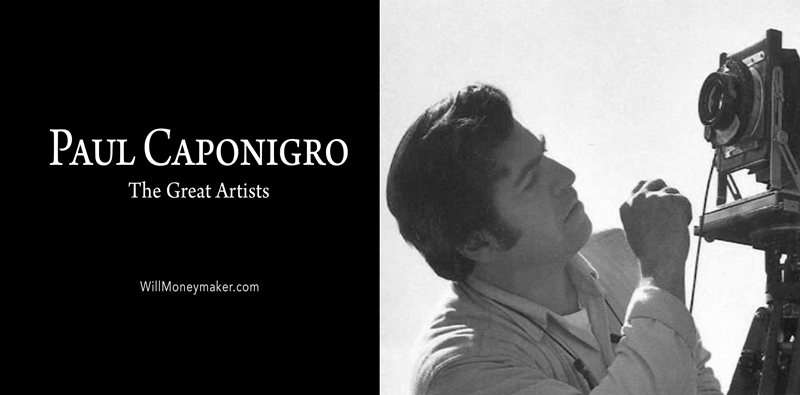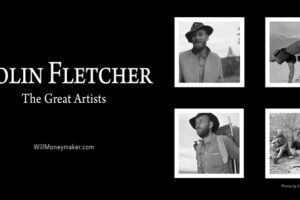Paul Caponigro is one of the most well-known, important master photographers to come out of the United States. Born in Boston in 1932, Paul began to explore the world of photography when he was thirteen years old. He had his own camera and used it to take pictures of the world in his neighborhood and other nearby areas, experimenting with different styles and exposures along the way. This began a career that has lasted for more than seven decades and has made him America’s foremost landscape photographer.
It is not only American landscapes that Paul is famous for, however. He has taken critically acclaimed landscape photographs of such haunting and enchanting locations as Stonehenge (as well as other stone megalith structures in the UK and Ireland), temples, shrines, and sacred gardens in Japan, and the mystical deep woods of his native New England. Many people who have viewed these photographs have described them as spiritually moving.
In his approach to landscape photograph, Paul has always preferred the intuitive approach, determining how best to take a photo or capture an image based on the environment and circumstances at the time, rather than planning out a method, or arranging certain details of the photo ahead of time. He is truly an organic photographer in every way, both in his subject matter and in his approach.
Music is important to him, and he has incorporated it into his photographs, where the silence of a visual image often becomes as real and tangible as an actual sound. He composes musical masterpieces in this way with his photography, without anyone ever hearing a note; however, everyone can tell that those notes are there, and can almost swear they hear them, up in the ether somewhere.
In fact, Paul began as a pianist but switched to photography at a young age. He still plays piano as a hobby, however, and has always maintained his belief that his musical training has contributed positively in numerous ways to his work as a photographer. Anyone who sees the images he produces with his camera would agree.
He has been awarded two Guggenheim Fellowships and three National Endowment for the Arts grants. His photographs are found in a plethora of places across the country, such as in most art museums, in books on the history of photography, and even in textbooks. He is a master of his medium, and that status remains undisputed in the United States, and the world.
After he graduated high school, Paul began studying music at Boston University. However, he eventually changed his major and his school, transferring to the California School of Fine Art to study photography as a professional. This was the school where famed photographer Ansel Adams established one of the first academic photography programs in the United States, and where photography first began to be considered a form of art.
After graduating, Paul studied with Minor White, before going out on his own as a photographer. The bulk of his subject matter has always been landscapes and still lifes, with a particular interest in and focus on nature, and natural structures and forms. His first one-man photographic exhibit was at the George Eastman House in 1958. He taught part-time at Boston University in the 1960’s, and consulted with the Polaroid Corporation on the side, helping them with technical research in the field of photography.
As with many American landscape photographers of the mid to late 20thcentury, Paul spent some significant time out west, photographing the unique and gorgeous landscape there. He lived in New Mexico in the town of El Rancho de San Sebastian from 1973 to 1993, working as a photographer.
His work was part of a group exhibition in 1971. The exhibition was called “Le Groupe Libre Exxpression—Expo 5,” and was put on by Jean-Claude Gautrand at Les Rencontres d’Arles, a festival in France. This introduced his work to a larger, international audience, and made him as famous for his landscape and still life photography around the globe as he was already becoming in the United States. It was a real honor and a true breakthrough in recognition in his career.
Paul received the Royal Photographic Society’s Centenary Medal and Honorary Fellowship in 2001, in recognition of his significant and ongoing contributions to the field of photography over the decades. His work is now considered very prestigious, and it can be found in such illustrious museums and galleries as the Guggenheim, the New Mexico Museum of Art, the Whitney, the San Francisco Museum of Modern Art, and the Norton Simon Museum.
Paul is still passionate about the medium he has loved for so long, and he continues to take amazing, detailed photographs that show the world his unique view of things. Much of his skill is that which cannot be taught; it is inherent to him, and he has a natural eye for locating and taking the best photographs to suit him. He shows no signs of slowing down, which is a definite plus for the world of photographic art. His career and work already span the better part of a century. When you put it all together, it is a remarkable body of work that represents the changing landscape of the world from the 20th century to the 21st.
And, all the while, he has done photography his way, as only he can. This dedication to individualism, and to follow his own instincts, rather than what may be considered proper technical form, is what makes his work stand out from others, and positions him firmly as one of America’s undisputed masters of landscape photography, even today. Few can even come close to touching him in style, emotion, and in sheer accomplishment in this field. Paul Caponigro is a true American original.
Following in his famous father’s footsteps, Paul’s son, John Paul Caponigro, is a pioneering digital photography artist, taking the art of photography to its next level in the world of photographic technology and techniques.





